Media | Articles
Spreading the LUV: A brief history of Detroit’s mini-trucks
What better way for a gearhead to celebrate Valentine’s Day than with tiny trucks that make you say “aww”? We originally published this story in the summer of 2018; it’s back because LUV lasts forever. –EW
It might be hard to imagine, given the current, cutthroat state of the pickup truck segment, but there was once a time when these task-focused haulers were largely an afterthought to the bean counters in Detroit. Fifty years ago, before King Ranches and Longhorns lined their interiors with enough leather to reach from Lansing to Laredo, trucks were barebones affairs built to get the job done and sold to customers who honestly weren’t expected to use them as daily drivers.
An even more hands-off approach was applied to the burgeoning compact-truck scene, which caught the Big Three completely off-guard at the beginning of the 1970s. General Motors, Ford, and Chrysler had essentially ignored the small pickups being imported by Toyota and Datsun throughout the previous decade, blissfully ignorant of the fact that a growing cohort of buyers was willing to take a chance on a “foreign” brand if it meant an easy-to-drive truck that offered decent practicality and a low purchase price. In fact, it’s safe to say that Datsun (now Nissan) carved out its first important foothold in America by way of its 320/520 series of mini-trucks.
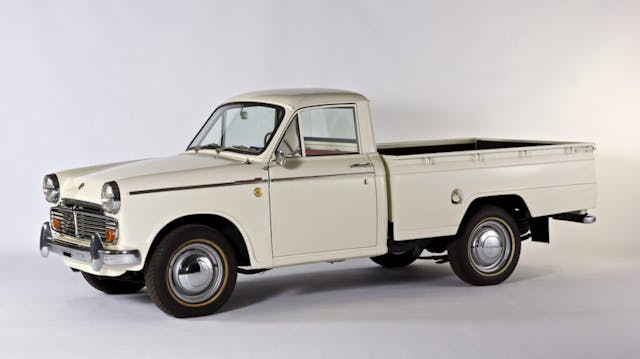
Scrambling to capture a demographic they hadn’t even known existed, Michigan’s best minds had to come up with a compromise, and quickly, until they could marshal the resources required to develop their own homegrown trucks. The result was a series of captive imports rebadged to battle the best that Japan had to offer … with the best that Japan had to offer. Each automaker was able to avoid the egregious 25-percent “Chicken Tax” by importing its rigs in chassis cab configuration for final assembly stateside.
Let’s take a look at the trio of mini-trucks fielded by Detroit for that awkward 10-year stretch that lasted right up until the likes of the Ranger and S10 took over the reins.
Marketplace
Buy and sell classics with confidence
Chevrolet LUV
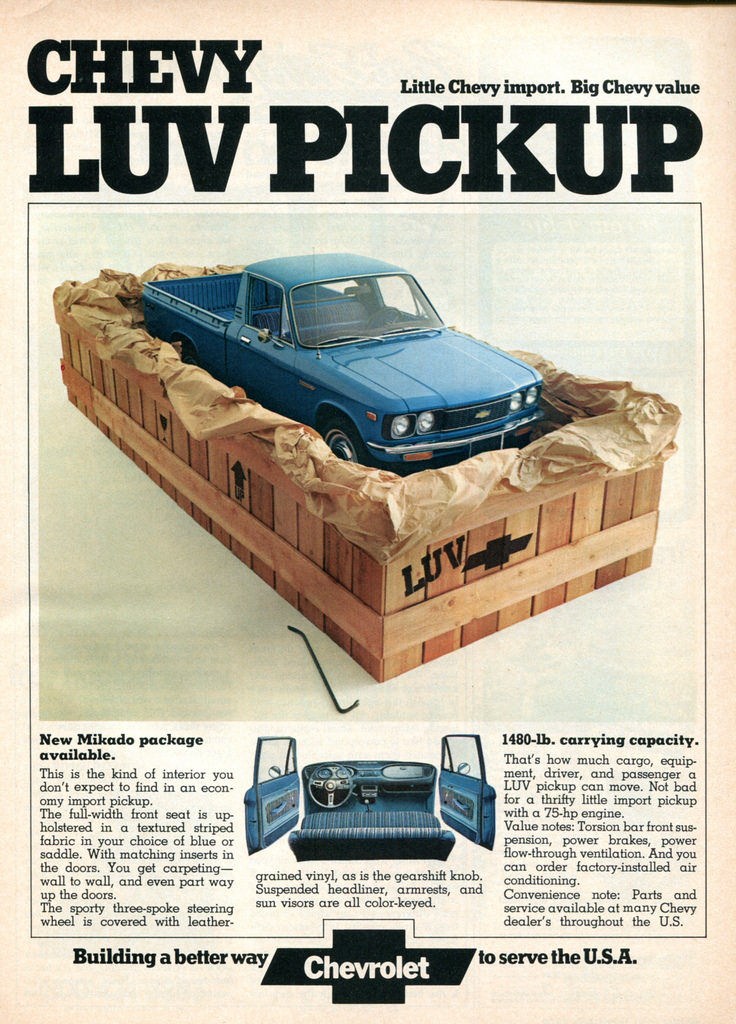
GM’s ace in the hole when it came to dealing with the nascent mini-truck madness was that it owned a sizable chunk of Isuzu. After a few terse phone calls, Chevrolet had its first compact truck ready to go, sent across the Pacific in droves to America where it would receive both the Bowtie and the unusual “LUV” badge, an acronym for Light Utility Vehicle.
The LUV was as basic as you could get when it appeared in 1972, offering a 1.8-liter, 75-horsepower, four-cylinder engine; four-speed manual gearbox; and 88 lb-ft of shrub-pulling torque. With a 102.4-inch wheelbase and 1400 pounds of cargo capacity, Isuzu’s finest was a paragon of pint-sized practicality.
In 1976, the LUV would gain a three-speed automatic and front disc brakes. By the end of the decade it was possible to snag a chassis-cab version of the truck, choose between 6- and 7.5-foot bed lengths, add four-wheel drive, and benefit from an additional five horsepower from an upgraded four-banger. A number of styling changes would also come and go with the Chevrolet, including a switch from quad headlights to a simple pair in 1978.
Chevrolet was strategic in spreading the LUV, making the truck available first in parts of the country where buyers had already demonstrated significant interest in smaller pickups. As a result, the LUV sold in huge numbers, with sales shooting from just over 20,000 in its first year all the way to a peak of more than 100,000 in 1979.
The second-generation truck that appeared in 1981 adopted styling that resonated with fewer buyers, but it wouldn’t matter that sales were cratering because the S10 was right on the horizon—and besides, Chevy had little to complain about having moved 462,000 LUV units since the model was introduced. Not bad for a segment that no one saw coming.
Ford Courier

The Ford Courier was another example of an American institution leaning on a Japanese partner to fill a hole in its product planning. In 1972, Mazda was already selling the B1600 in the United States (and had been offering the more powerful B1800 in Canada since 1970), but it hardly minded when the Blue Oval strong-armed its way into the mini-truck mix by rebadging the B1600 as the Courier. Besides, Mazda had the Rotary Pickup waiting in the wings, so what did it matter if Ford wanted a few thousand piston-driven trucks in the meantime?
Ford took a more aggressive approach to updating the Courier than Chevy did with the LUV, at least when it came to drivetrain choices. Whereas the LUV would stick with its original powerplant throughout its entire production run, the Courier’s initial 1.8-liter four—with 74-hp and 92 lb-ft of torque—was eventually complemented by a roughly 90-hp, 2.3-liter option lifted from the Pinto (for its 1977 redesign), and then replaced entirely by a 2.0-liter mill (in ’79).
Ford also made a three-speed automatic available alongside the truck’s standard four-speed manual right from the start, adding a five-speed option in 1976. Strangely, despite the ostensibly identical Mazda delivering 2250 pounds of cargo capacity, the Courier matched the LUV with an advertised 1400-pound carry rating.
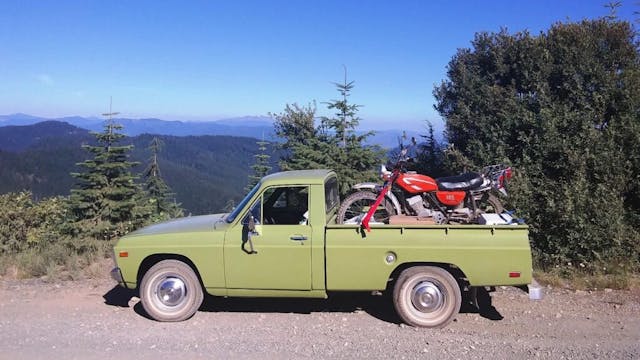
Other changes throughout the decade included the unusual decision to lengthen the cab by three inches in 1976, one year before the second-generation model debuted. Also strange was the availability of third-party four-wheel drive (most notably under the Courier Sasquatch name) in the absence of a Ford-developed system.
If you’re an EV historian, then you’ll also be intrigued by the ultra-rare Jet Industries ElectraVan 750, a battery-powered version of the Courier that offered 60 miles of range on a single charge.
The Courier would survive until 1982, when it was retired in favor of next year’s iconic Ranger.
Dodge D-50 / Plymouth Arrow
20180716162248)
Chrysler leaned on its long-standing history with Mitsubishi when it came time to tackle the surging mini-truck threat. Unlike Mazda and Isuzu, however, Mitsubishi was pickup-poor throughout most of the ’70s, leaving the Pentastar on the outside looking in at all of the action being soaked up by Ford and GM.
It wasn’t until 1979 that Dodge would import the Mitsubishi Forte, which had gone into production the year before, relabeling it the “D-50.” Deciding that the best way to make up for lost time was to double its efforts, Chrysler also tagged Plymouth into the pickup game with the Plymouth Arrow, which was identical to the Dodge.
With a wheelbase seven inches longer than that of the LUV, and featuring a choice of engines delivering between 93 (from a 2.0-liter four) and 108 (from 2.6-liter four) horsepower, the Mitsubishi twins were certainly competitive. This was especially true when considering the larger motor’s 139 lb-ft of torque, and the availability of three, four, or five forward gears. Payload remained locked at the seemingly industry-standard 1400 pounds and was delivered by a 6.5-foot bed (with another 100 pounds of bed capacity added the following year).
In 1981, the D-50 would be renamed the Ram 50, and while the Arrow would disappear by 1982, the Dodge version would continue on for an astonishing 13 additional years (finally leaving the American market in 1994). During that time it would gain four-wheel drive, a four-door model (in addition to extended-cab versions), and endure a brief flirtation with diesel power.

Why did the Ram 50 endure? Truth be told, Chrysler was in total chaos in the early ’80s and had no money to throw at a dedicated compact-pickup platform. While Ford fans and Chevy loyalists were enjoying the Ranger and S10 for the 1982 and ’83 model years, Mopar maniacs were instead gifted with the ultra-weird (and short-lived) Dodge Rampage and Plymouth Scamp, L-body front-wheel-drive haulers that had more in common with the Subaru Brat than they did a legitimate truck. These were followed by the unibody Jeep Comanche in the middle of the decade, which was itself joined by the mid-size, and full-frame, Dodge Dakota in 1987, creating a confusing-at-best situation at Mopar dealerships for much of the ’80s.
That confusion seems appropriate considering how long it took the Big Three to figure out there was a mini-truck market in the first place.
Check out the Hagerty Media homepage so you don’t miss a single story, or better yet, bookmark it. To get our best stories delivered right to your inbox, subscribe to our newsletters.









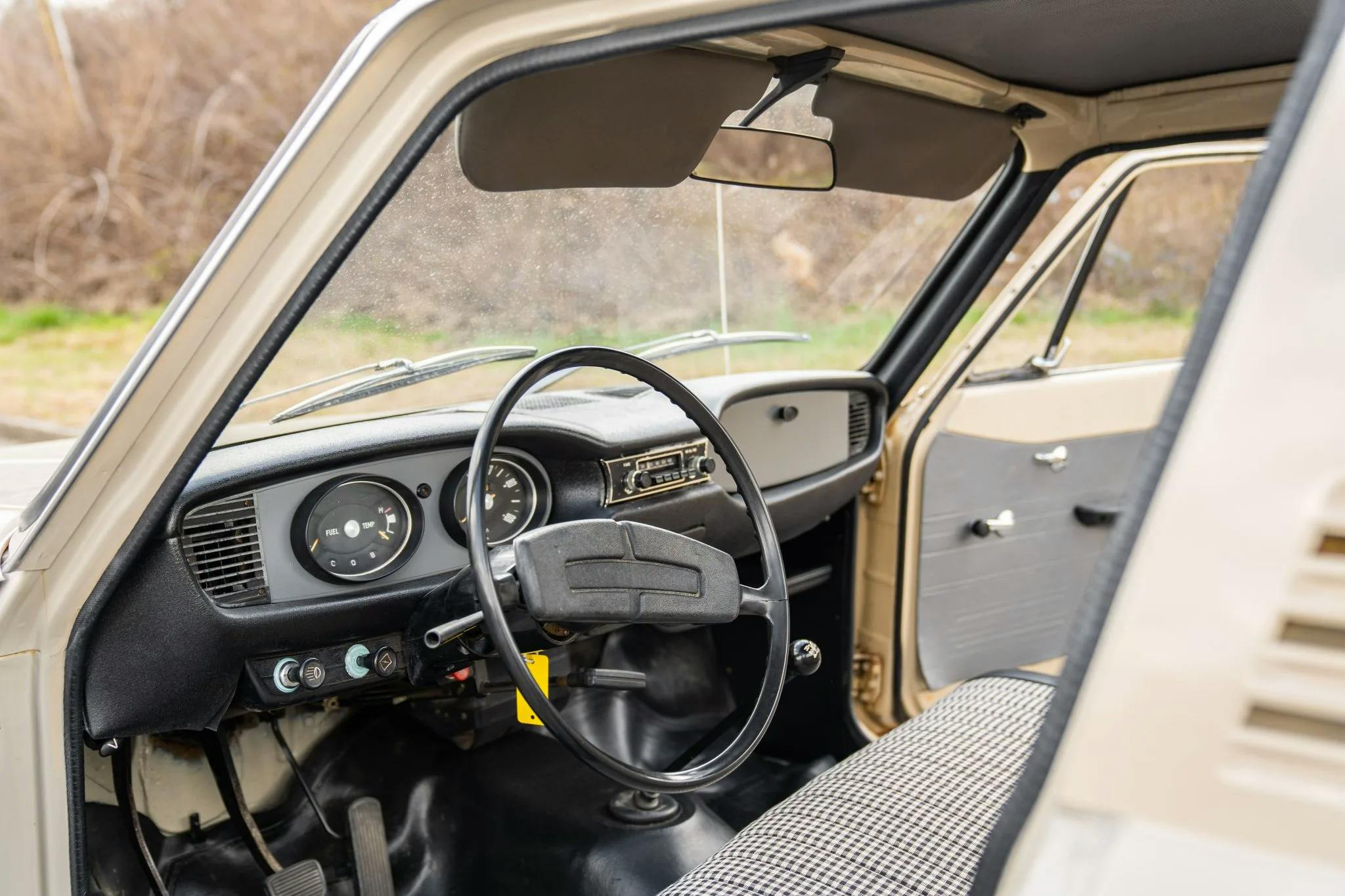
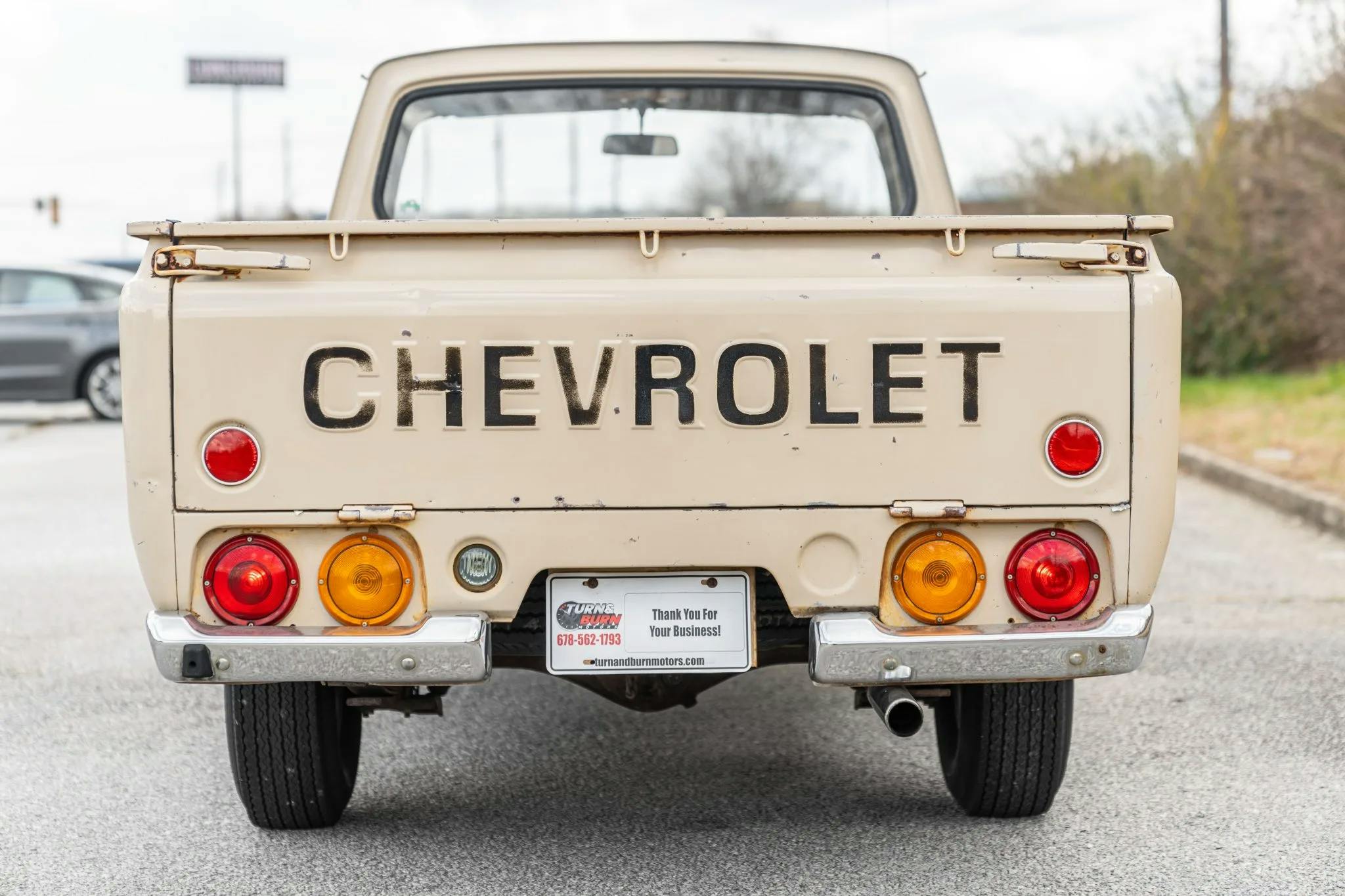

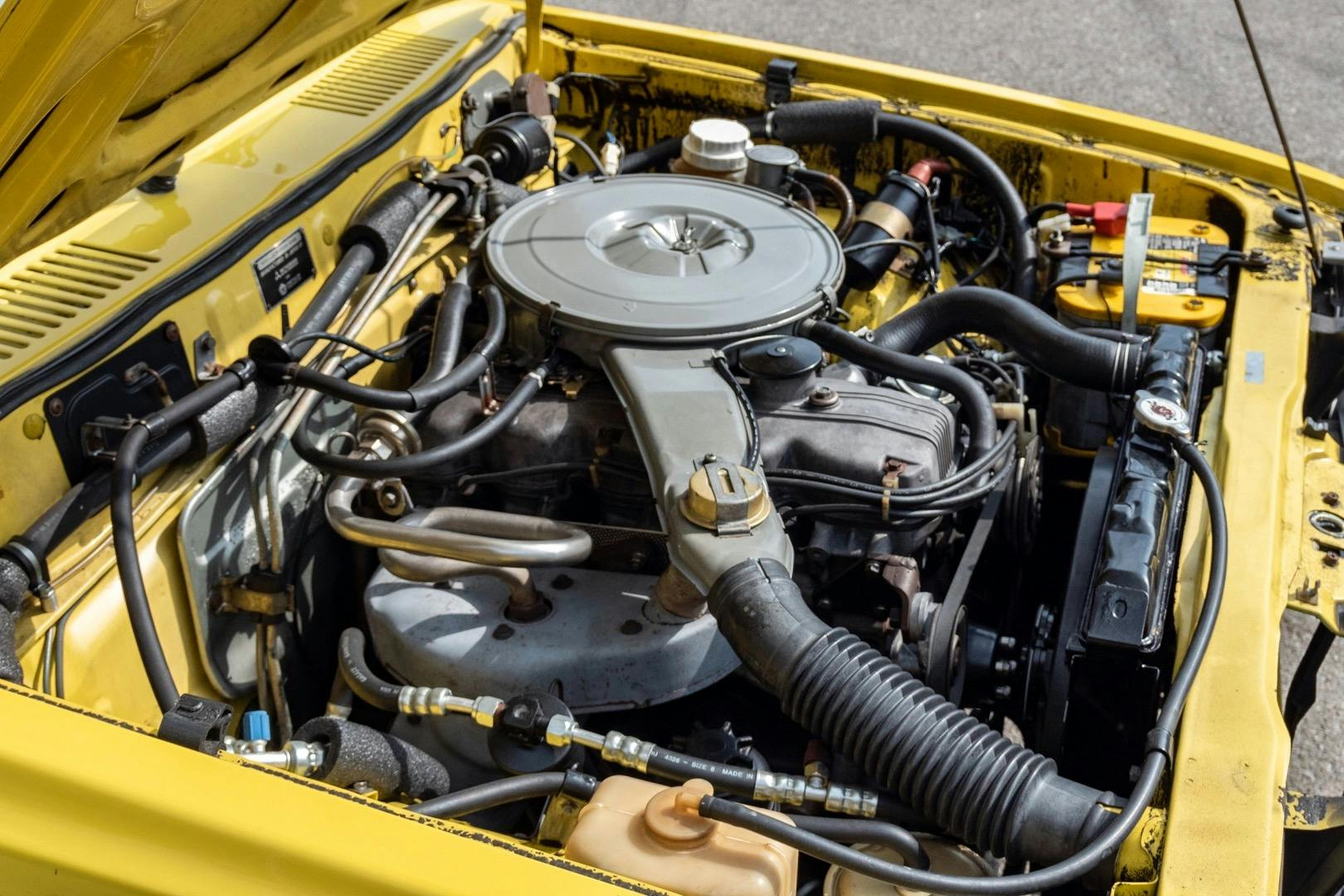

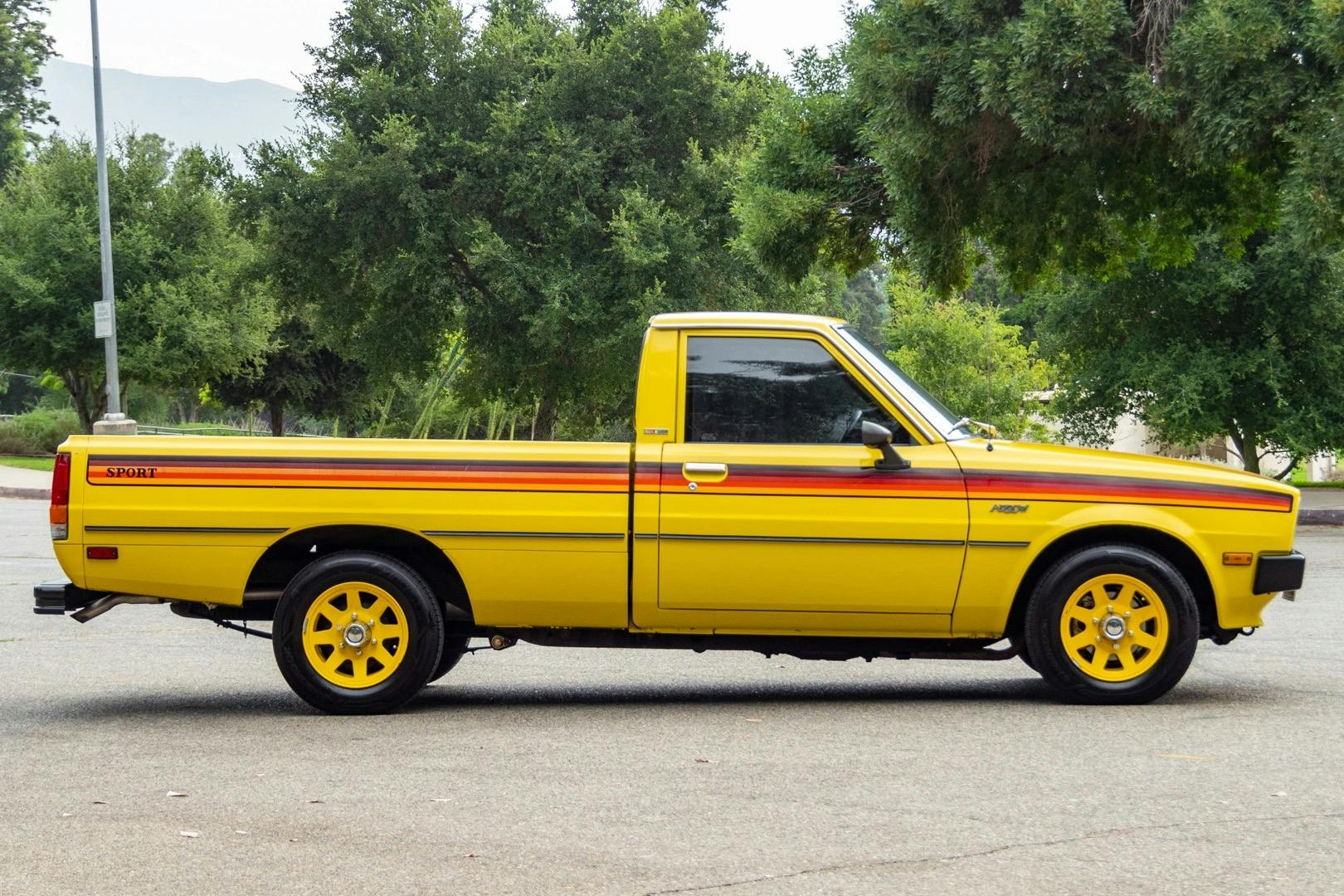













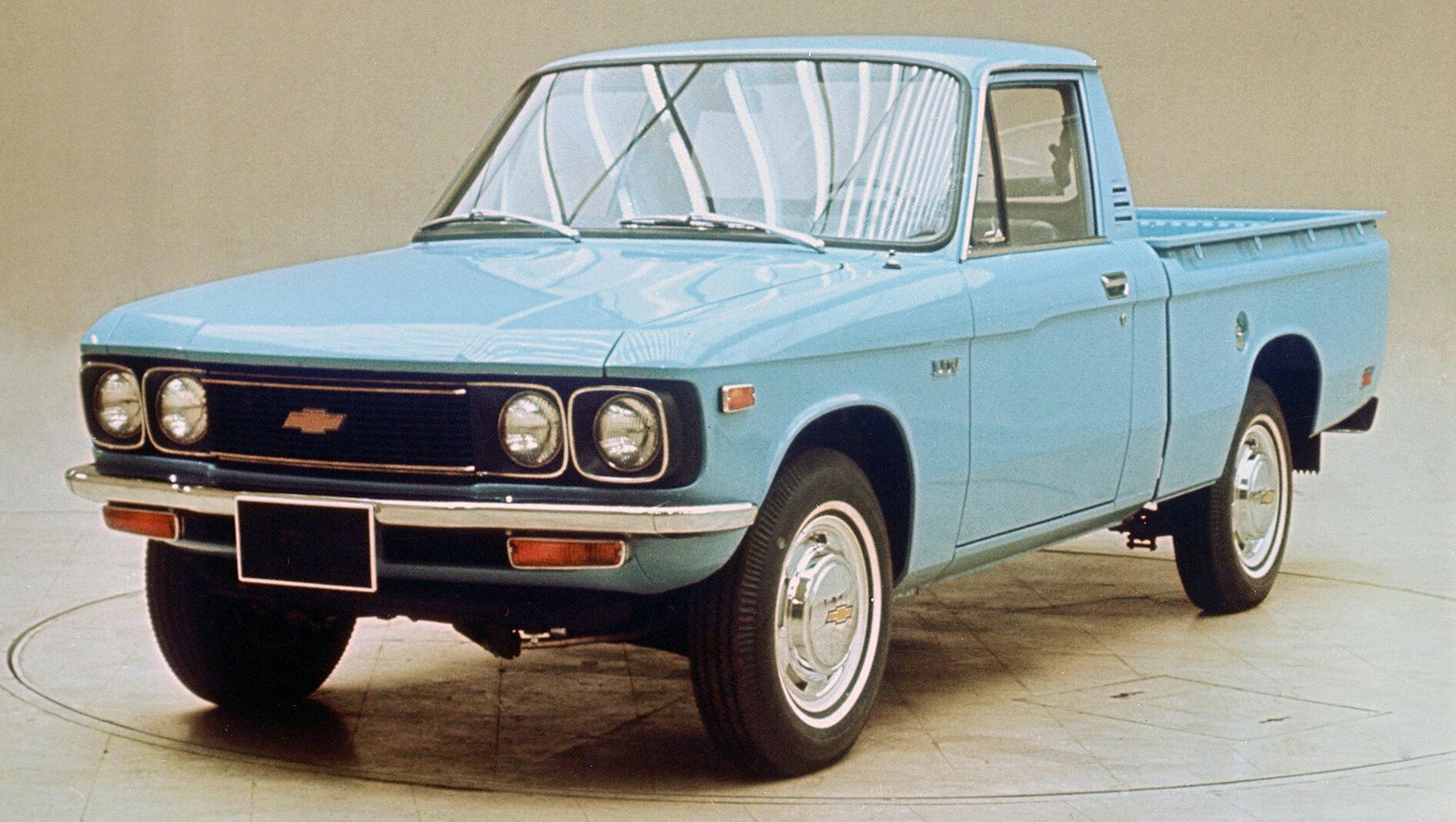
I remember reading a Car & Driver review of this truck entitled “Luv Without Sex.”
My dad bought 1972 Chevy LUV drove it for four years. Pulled semi truck and trailer off of I-10 in Tucson. Shocked everyone. Traded it in in 1976 for the 1976 Chevy LUV. Then I bought the 1982 Isuzu diesel Pup. Loved all three of those trucks.
Growing up in the late 90’s the Domestic/Imported trucks were around my rural area. The most common were the Courior, with a few LUV’s. At that point most of the ones I saw were beat to death and on there 3rd to 4th owners. My sister dated a guy with a D-50 which at the time was the only one I had seen in person. My neighbor did have the Mitsubish version which he used for 60 mile round trip commute and to play golf in. Eventually, the head gasket went on the Mistsubish. He was able to limp it to mega used car dealers having a midnight sale. Being cool at night it didn’t over heat and he traded it in on a Oldsmobile Silhouette. He loved that van as he said “It’s like I have a real car to drive now”
How about…..Mitsubishi’s convoluted / braggadociosly-badged, little truck named: ‘Mighty Max’ …the compact pickup that was produced between 1983 to 1995.
Mighty (how)? Lol …. Max (compared to what)? …Lol Was the dealer sales brochure in comic-book-form? lol
Way back when….a friend’s little VW beetle, tow-pulled-out another friend’s little Mighty Max pick up truck, that was stuck in some mud, in a north New Jersey meadowlands marsh-swamp….
An old garden hose was used to make the tow work (wrapped several times around each bumper)– The tow scene looked like 2 tonka toys in a tug-of-war … Lol !
Some luv for the little LUV– The Might Max was actually a sharp-looking, nifty little mini-hauler. :]
I had a Datsun, LUV, and a Rampage. Wish I had them all back! Never thought that ‘the land of the free” would be the most restrictive and protectionist country on the planet when it comes to vehicle choice. Take some time to see all the small trucks, cars and E.V.’s the rest of the world gets but, uh oh, not allowed in the good ole U.S.A. This is where you throw in the (but they aren’t safe enough) lie. Big auto knows that if any of these got in (in mass), it would likely be the end of them. Yet they are doing a pretty good job of making bad choices all by themselves. Their inability to offer competitive smaller vehicles will be their demise. Does the 1970’s ring a bell. History repeating itself I think, with a few tweaks.
I have the same opinion on this subject. I have had my 2002 Ranger 2WD extended cab since new; it has 113,000 miles and I wouldn’t sell it. I get offers on it all the time. I also have a 2016 F-150 4WD platinum crew cab. The F-150 with it’s 3.5 literEco-Boost gets better fuel mileage, but when I need a truck guess which one gets the nod?
I think the domestic mfgrs missed it when they let the mini truck die. The new Ranger is bigger, has smaller windows and isn’t to my taste. I will stick with my 02 Ranger.
Why no mention of the Scout Terra? It had good looks and a v8.
How about the early VW Rabbit pick-ups made in PA?
We had a D50 for a work truck back in the 90s ,the old german guy I worked with would go out every morning and start it up and let it warm up while we got our assignments for the day ,one time he had just stepped on the porch to the office turned to see the truck, on high idle, racing acrossed the parking area backwards through a fence and into the canal, luckily it was winter time so the canal was dry. The truck’s automatic got too unreliable in park to leave it very far or running.
They need to bring these back. The small pickup trucks on offer from the top three are gigantic these days. And so are the asking prices. They have to figure out not everyone is rich but they are willing to buy something of modest size and modest price. Back then I had a Datsun long box with a tiny four-cylinder engine. I renovated an entire house and did multiple dump runs with it and it never complained even though it looked like a lowrider as it made its way to the dump. I wish I still had that rig.
I worked at a Chrysler Dodge dealership in the late 70s, early 80s. We bought a factory new customized D50 from Alexander Bros ( I was told it was the same Alexander Bros as the Detroit area customizers). It had a step side bed, custom wheels, etc. Very cool little truck.
I picked it up in Jacksonville, Florida and drove it back to Tennessee. I would love to see one of those today.
I have been driving the diesel LUV’s and P’UP’s for 12 years now and am wonderfully impressed. my present 2wd has 345,000 on it and just purrs along getting fabulous mileage ( 35+ on biodiesel ). I also have a 4wd ranch truck. parts are cheap and they’re easy to work on. hands down the most cost effective vehicles I have driven, ever. wish there was something nearly as simple and good being produced today but alas, just bloated nonsense that I can see. I love my Isuzu diesels !
I believe the Rampage was modeled more on the VW Rabbit based pickup, as the Horizon/Omni twins were based more on the Rabbit.
Had a ’82 DATSUN 520 for a few years. Great little truck, used mostly for commuting, & fun to drive. The previous owners had tricked it out with pinstriping, custom seat cover, & wheels, & it got a lot of compliments.
I bought a new ’79 Dodge D 50 with the 2.6 L engine and 5 Spd tranny. I kept it for several years and loved it. My kids learned to drive in it and it experienced several (no fault) accidents during that time. However, I did the body repair work myself as well as all of the maintenance . I sold it for a surprising amount as I clearly needed a larger pickup by that time. I will always remember it fondly.